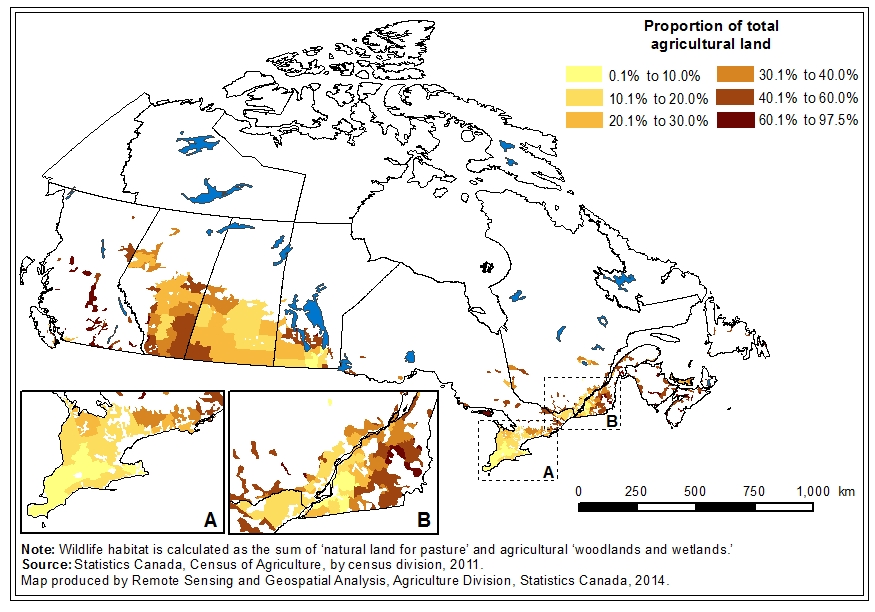A bigger role for Canada providing the food for the world as heat rises
For Canada, most analysts and farmers believe the potential rewards of climate change will outweigh the risks – at least over the next 30 years.
But if heat keeps on rising and causes greater water shortages and crop failures, Canada could see a decrease in farm productivity by the end of the century, said agriculture official Jarvis.

For now, improvements in farm technology, drought-resistant crops and new harvesting methods mean farmers should be poised to ramp up production as temperatures warm.
“Canada could be playing a bigger role providing the food for the world as heat rises,” Jarvis said. “Other countries are going to be affected (by climate change) much worse than we are,” he said. “It’s not a really happy picture overall.”
Increasing wildlife habitat on agricultural land
Using data from the Census of Agriculture, wildlife habitat represented 30.2% of all agricultural land in Canada, accounting for 19.6 million hectares in 2011. Looking at individual census divisions, wildlife habitat ranged from less than 10% to more than 90% of agricultural land. Census divisions with more than 60% of agricultural land considered as wildlife habitat tended to be concentrated in the Atlantic provinces and British Columbia. However, Alberta and Saskatchewan, with 70.0% of agricultural land in Canada, reported the largest wildlife habitat areas at 7.3 million hectares and 5.8 million hectares, respectively.
The majority of wildlife habitat reported by Canadian farmers was natural land for pasture, which represented 22.7% of all agricultural land, and the remainder was woodlands and wetlands, which accounted for 7.6% of all agricultural land.
Natural land for pasture is largely found in western Canada, with Alberta reporting the most amount of natural pasture area in 2011 (6.4 million hectares), followed by Saskatchewan (4.8 million hectares), Manitoba (1.5 million hectares) and British Columbia (1.4 million hectares). British Columbia reported the largest area of natural land for pasture as a proportion of total agricultural land (53.1%).
Woodlands and wetlands represented a larger proportion of agricultural land in eastern Canada. More than 40% of agricultural land in the Atlantic provinces was reported as woodlands and wetlands in 2011. The next largest proportions were in Quebec (31.6 %) and Ontario (12.6%). In terms of total area, however, woodlands and wetlands were spread more evenly across the country. Quebec reported the largest area of woodland and wetland in 2011 (1.1 million hectares), followed by Saskatchewan (1.0 million hectares) and Alberta (0.9 million hectares).
Source: Statcan.gc.ca ; Reuters.com



















 Copyright 2019 All rights reserved.
Copyright 2019 All rights reserved.